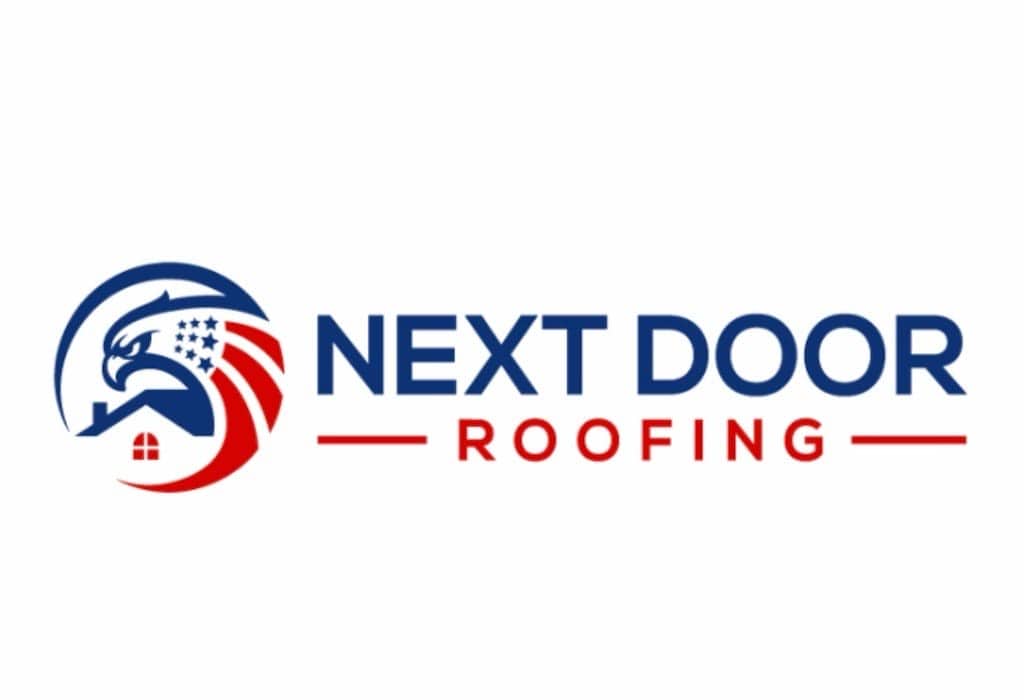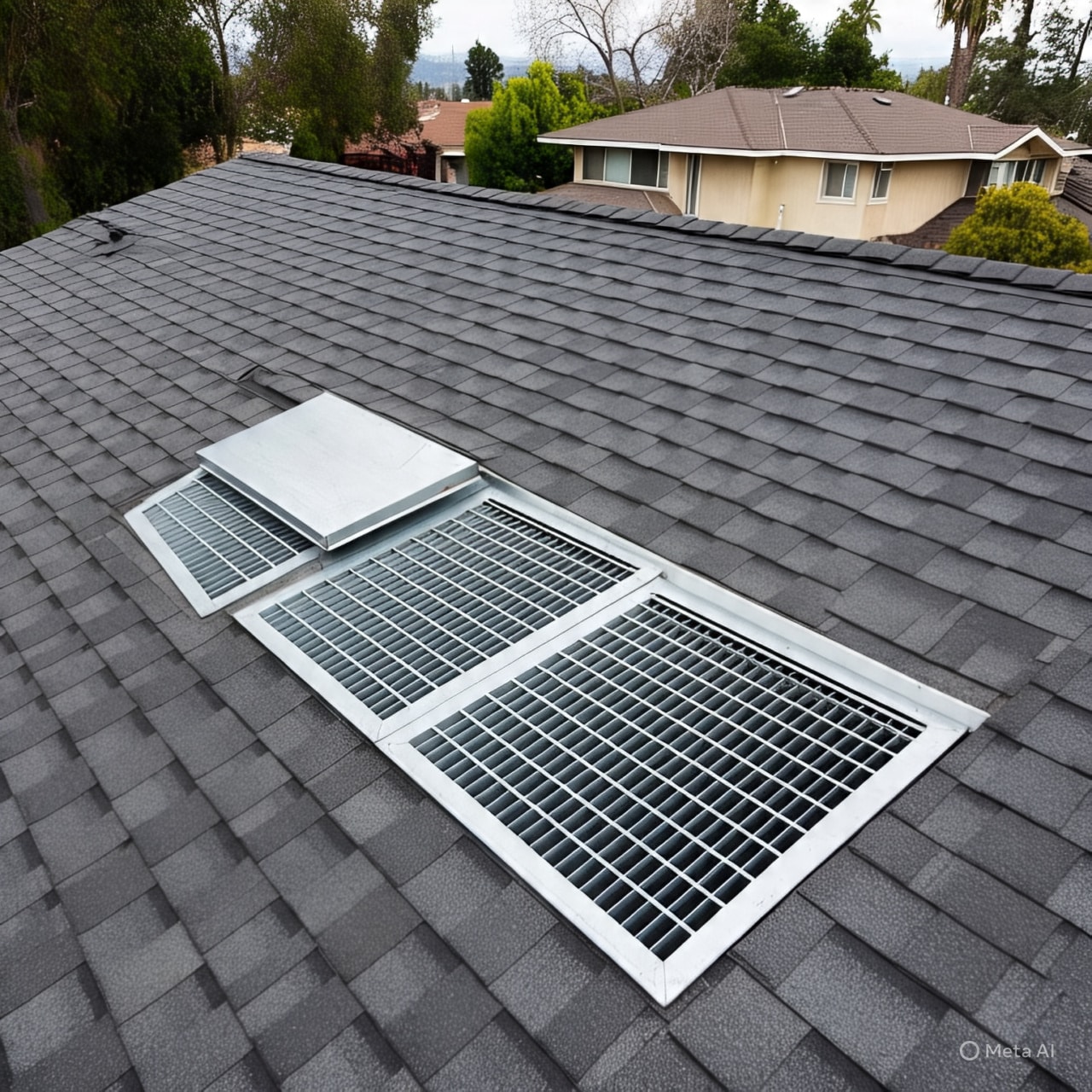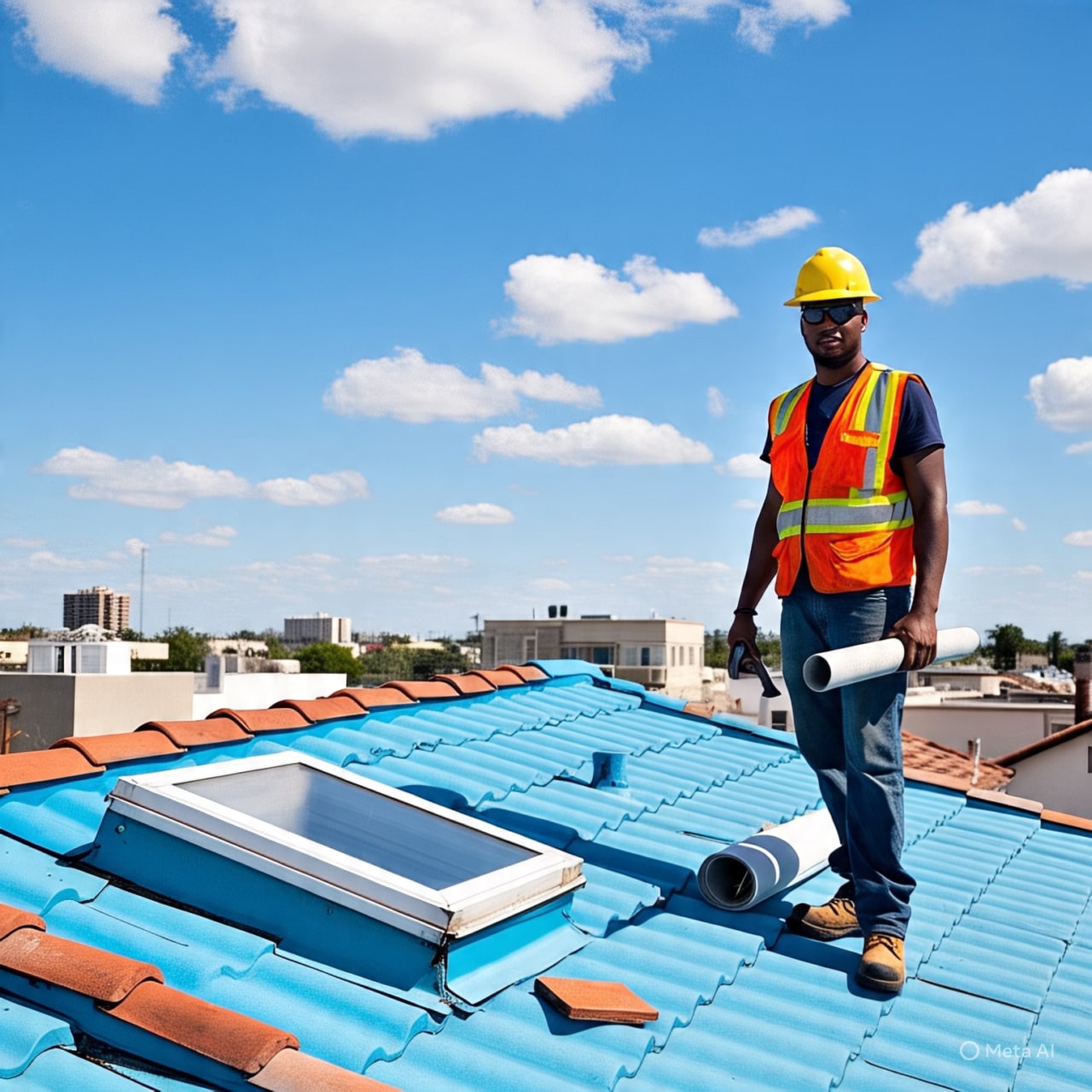When it comes to roofing your home, the choice of underlayment is a critical decision that impacts both durability and effectiveness. Roofing underlayment in Lake Forest requires particular attention due to the area’s unique climate conditions. Whether you’re constructing a new roof or replacing an old one, understanding what goes beneath those shingles is essential for protecting your home from the elements.
Roofing underlayment acts as a protective layer between your home’s roof deck and the roofing material itself, like asphalt shingles, metal, or tile. It serves as an additional barrier against water infiltration, preventing moisture from seeping into the wood decking and causing rot or mold. Given Lake Forest’s varying weather patterns-ranging from heavy rains to occasional humidity-choosing the right type of underlayment can contribute significantly to the longevity of your roofing system.
The significance of selecting appropriate roofing underlayment becomes even more crucial when considering Lake Forest’s seasonal weather fluctuations and humidity levels. These factors make it necessary to opt for materials that can withstand temperature changes and moisture build-up effectively.
In this article, we will delve into all aspects of picking the perfect roofing underlayment tailored specifically for homes in Lake Forest, including understanding different types of underlayments and their pros and cons, how climate considerations come into play, and tips on ensuring proper installation and maintenance.
Understanding Roofing Underlayment
Roofing underlayment serves as a protective layer between your roofing material and the roof deck. It acts as a secondary barrier against water infiltration, providing an added line of defense should your primary roofing material fail. Additionally, it plays a critical role in reducing the potential for mold growth by keeping moisture out of the attic space. The quality of underlayment you choose can significantly impact the longevity and performance of your roofing system.
There are several types of roofing underlayments to consider: firstly, asphalt-saturated felt is one of the oldest and most commonly used options. Made from organic or fiberglass substrates saturated with asphalt, it’s relatively affordable and provides decent water resistance; however, it can tear easily and has a shorter lifespan compared to newer materials. This type of underlayment is particularly beneficial in moderate climates but may not hold up well in Lake Forest’s fluctuating weather conditions.
Next, rubberized asphalt is another option that offers superior water resistance due to its high percentage of asphalt content combined with added rubber polymers. It often includes a peel-and-stick backing that provides an excellent seal around nails and other roof penetrations, making it ideal for areas prone to heavy rainfall. Lastly, synthetic underlayment is becoming increasingly popular because it’s lightweight, durable, and resistant to tearing.
Made from polypropylene or polyethylene, this type offers enhanced protection against moisture and UV rays. For homeowners in Lake Forest who face diverse weather patterns throughout the year, synthetic options might be particularly advantageous due to their robust durability and adaptability.
When choosing the right roofing underlayment for your Lake Forest home, it’s essential to weigh these various materials’ pros and cons based on local climate considerations. Understanding how each type performs under specific conditions will ensure that you select an option that not only suits your budget but also provides reliable long-term performance tailored to Lake Forest’s unique environmental needs.
Climate Considerations in Lake Forest
Lake Forest experiences a unique set of weather patterns that can significantly impact the choice and performance of roofing underlayment. The city often sees a mix of rain, humidity, and temperature fluctuations throughout the year. These conditions necessitate an underlayment that not only protects against water ingress but also accommodates thermal expansion and contraction. Considering these elements is crucial in selecting an effective roofing underlayment Lake Forest residents can rely on.
Firstly, let’s talk about the rainy seasons in Lake Forest. Heavy rains can put any roofing system to the test, making water resistance a top priority for your underlayment. Synthetic underlayments are highly recommended for this climate as they provide excellent water resistance compared to traditional asphalt-saturated felt. Furthermore, rubberized asphalt options also offer superior waterproofing capabilities due to their self-sealing properties around nails and fasteners.
Moreover, high humidity levels can contribute to moisture build-up beneath your roof covering, which may lead to mold growth and structural damage over time. In areas like Lake Forest where humidity can be quite pervasive, choosing a breathable yet water-resistant underlayment is crucial.
Products with vapor-permeable membranes allow trapped moisture to escape while preventing additional water from seeping in. This balance is essential for maintaining a dry roof deck and prolonging the lifespan of your entire roofing system.

Temperature fluctuations present another challenge for roofing materials. Lake Forest’s weather can range from hot summer days to cooler winter nights, causing significant expansion and contraction in the roofing materials. Underlayments must be durable enough to withstand these cycles without deteriorating quickly. Rubberized asphalt stands out for its flexibility and ability to maintain integrity despite temperature changes.
Durability and Lifespan
When selecting roofing underlayment for your home in Lake Forest, understanding durability and lifespan is crucial to making an informed decision. The local climate, characterized by its seasonal rain and temperature fluctuations, can significantly affect the longevity of your roofing materials. Therefore, it’s essential to choose an underlayment that can withstand these conditions over an extended period.
Factors Influencing Durability
The durability of a roofing underlayment largely depends on its material composition. Asphalt-saturated felt, rubberized asphalt, and synthetic options each offer varying degrees of strength and resilience. Asphalt-saturated felt is the traditional choice and provides decent durability but may not perform well in extremely wet conditions or under intense UV exposure.
On the other hand, synthetic underlayments are designed to offer superior tear resistance and are often more robust against weather extremes. Rubberized asphalt is another highly durable option, excellent for moisture control but typically more costly.
Matching Underlayment With Roofing Materials
It’s also important to match the durability of your roofing underlayment with the expected lifespan of your primary roofing materials. For instance, if you’re investing in premium shingles or tiles that are rated to last 30-50 years, it makes little sense to pair them with a low-grade underlayment that may only last 10-15 years.
This mismatch could lead to premature roof failures and expensive repairs down the line. By choosing high-quality roofing underlayment Lake Forest homeowners can ensure that both their top layer and underlying protections are aligned for long-term performance.
Impact of Lake Forest Weather
Lake Forest’s unique weather demands a durable roofing solution that can handle not just heavy rains but also humidity and temperature shifts throughout the year. Synthetic underlayments often stand out due to their enhanced resistance against such variables.
These options maintain their integrity better over time compared to traditional felts which might degrade quicker when exposed persistently to moisture or heat variations. By focusing on products specifically designed for such environments, residents can better protect their homes from potential damages caused by Lake Forest’s challenging climate patterns.
Water Resistance and Moisture Control
One of the most critical aspects of choosing roofing underlayment in Lake Forest is ensuring its water resistance and moisture control capabilities. Given the region’s susceptibility to heavy rains and occasional periods of high humidity, selecting an underlayment that can withstand these conditions is paramount.
Think of your roofing underlayment as the last line of defense between your home and the elements; it must be robust enough to prevent water infiltration that could lead to mold, mildew, or structural damage.
When evaluating different types of roofing underlayments, it’s essential to understand how they perform under wet conditions. Asphalt-saturated felt, commonly known as tar paper, has been a traditional choice for many homeowners. It provides moderate water resistance but can deteriorate more rapidly when exposed to prolonged moisture or standing water. This makes it less ideal for Lake Forest’s wetter seasons unless coupled with additional waterproofing measures.
In contrast, synthetic underlayments have gained significant popularity due to their superior performance in preventing water penetration. Made from advanced polymers, synthetics are not only lightweight but also offer excellent tear resistance and durability. These materials excel at shedding water quickly and preventing buildup-key features that make them highly effective for roofing underlayment lake forest.
Another viable option is rubberized asphalt underlayments; these are self-adhering and provide an added layer of waterproofing due to their rubber content. This feature can be especially beneficial during Lake Forest’s intense rainy periods, ensuring your home remains well-protected from moisture-related issues.
Installation and Maintenance
Proper installation and maintenance of roofing underlayment are paramount to maximize the effectiveness and lifespan of your roofing system, especially in Lake Forest’s unique climate. The first step in the installation process is ensuring that the roof deck is clean and dry.

Any debris, moisture, or irregularities can cause improper adhesion and reduce the performance of the roofing underlayment. For homeowners in Lake Forest, where humidity and rainfall are common, it’s even more critical to start with a pristine surface to prevent future issues.
Once the deck is prepared, you can begin rolling out the underlayment starting from the lowest edge of the roof, moving upward towards the peak. This method ensures that overlapping layers direct water away from the roof structure.
Each type of underlayment-whether asphalt-saturated felt, rubberized asphalt or synthetic materials-has specific guidelines for overlaps and fastening methods which must be closely adhered to for optimal performance. In wet climates like Lake Forest’s, consider using waterproofing tape along seams for additional protection against moisture ingress.
Maintenance also plays a crucial role in extending the life of your roofing system. Regular inspections should be conducted at least twice a year and after significant weather events to check for any signs of wear or damage. Look for areas where water might be pooling or seeping into seams which may indicate minor breaches that could worsen over time.
In places with high precipitation like Lake Forest, it’s a good idea to clear accumulated debris such as leaves or branches that may trap moisture against your roofing material. Investing time in these routine checks can significantly prolong both your roofing underlayment’s lifespan and overall durability.
| Installation Step | Description |
|---|---|
| Prepare Roof Deck | Ensure it is clean and dry. |
| Roll Out Underlayment | Start from lowest edge moving upwards. |
| Add Waterproofing Tape | Use on seams for extra moisture protection. |
| Inspection Frequency | At least twice a year & after significant weather events. |
By following these meticulous installation steps and incorporating regular maintenance routines tailored to Lake Forest’s weather conditions, homeowners can ensure their investment in high-quality roofing underlayment pays off long-term.
Cost vs Value
When it comes to selecting roofing underlayment in Lake Forest, understanding the cost versus value is crucial for making an informed decision that aligns with your budget. First, start by breaking down the initial costs of various roofing underlayments available on the market.
Asphalt-saturated felt typically has a lower upfront cost compared to synthetic options and rubberized asphalt. However, while it may be appealing from a price perspective initially, this choice might not offer the same long-term performance or durability.
Evaluating the cost-benefit ratio can help you understand whether investing more upfront will save you money in the long run. For instance, synthetic underlayments might have higher initial costs but often provide enhanced durability, better resistance to weather conditions, and longer lifespans. In contrast, asphalt-saturated felt may lead to higher maintenance or replacement costs down the line due to its susceptibility to wear and tear in Lake Forest’s variable climate conditions.
Economic factors specific to Lake Forest also play a vital role in making your decision. Given the region’s unique weather patterns-marked by seasonal rain and high humidity levels-it makes sense to consider products that offer robust water resistance and longevity even if they come at a higher price point.
By factoring in potential repair costs due to local weather impacts, homeowners can make more financially prudent choices. Investing in durable roofing underlayment Lake Forest homes need can lead to significant savings over time by reducing frequent repairs and extending the lifespan of your entire roofing system.
Environmental Impact
When selecting roofing underlayment in Lake Forest, the environmental impact of your choices is a significant consideration. This region has increasingly adopted green practices and eco-conscious living, demanding homeowners to seek sustainable solutions in their home improvements. One approach to minimizing your ecological footprint is by opting for recyclable and sustainably sourced underlayments. Many modern synthetic underlayments, for instance, are produced with fewer toxic materials and some are even designed to be biodegradable.
Sustainable and Recyclable Underlayment Choices
There are several environmentally friendly options available on the market today. Among these, synthetic underlayments stand out due to their longevity and lower environmental impact during production. Brands that use recycled materials or adopt energy-efficient manufacturing processes are particularly commendable. Moreover, rubberized asphalt options that employ recycled plastics can significantly reduce waste.
Rubberized asphalt not only provides high durability but also enhances the water-resistance of your roof, making it a viable option for Lake Forest’s humid climate while supporting sustainability goals. The proper application of these materials will ensure more energy efficiency throughout your home by maintaining better insulation and reducing HVAC usage.

The Importance of Environmentally-Conscious Choices in Lake Forest
The community values of Lake Forest emphasize sustainability and environmental responsibility. Choosing eco-friendly roofing underlayment aligns with local efforts to maintain clean air standards and preserve natural beauty. Beyond individual preferences, regulatory compliance often pushes homeowners towards greener options as well.
Consulting local experts on roofing underlayment lake forest can provide valuable insights into which products have been most effective in preserving both homes and environmental health in this particular area. By making informed decisions about environmentally responsible underlayments, you contribute not just to the well-being of your own home but also towards a larger communal effort to protect Lake Forest’s environment for future generations.
Case Studies and Local Recommendations
Real-life examples provide invaluable insights into the performance of roofing underlayment in Lake Forest’s unique climate. One notable case is the renovation of a historic home located near Lake Forest College. This property faced recurring issues with moisture infiltration due to the area’s significant rainfall and fluctuating temperatures.
The homeowners opted for synthetic roofing underlayment combined with asphalt shingles, leading to a dramatic improvement in both water resistance and overall roof durability. After five years, the homeowners reported no leaks or significant wear, highlighting the effectiveness of this pairing.
Local experts also recommend considering rubberized asphalt underlayment for homes in areas prone to heavy rain and humidity. A recent interview with John Hughes, a veteran roofer in Lake Forest, revealed that while rubberized asphalt might be more expensive initially, its superior adhesive properties and flexibility make it an excellent choice for homes dealing with persistent wet conditions. It acts as an impenetrable barrier against moisture and provides added insulation during colder months, ultimately reducing heating costs.
When it comes to top-rated products specifically designed for Lake Forest’s climate, several local stores stock high-quality options. For instance, “Lake Forest Building Supply” has seen increased customer satisfaction rates with brands like GAF FeltBuster® Synthetic Roof Deck Protection and Grace Ice & Water Shield®. These products offer robust water resistance and are designed to withstand the environmental pressures typical in Lake Forest.
| Case Study | Outcome |
|---|---|
| Synthetic underlayment on a historic home | No leaks or significant wear after five years |
| Rubberized asphalt recommended by John Hughes | Acts as an impenetrable barrier against moisture |
| GAF FeltBuster® Synthetic Roof Deck Protection | High customer satisfaction rates at local stores |
These insights confirm that making informed choices about roofing underlayment in Lake Forest not only ensures long-term protection but also aligns well with local conditions. Whether opting for synthetic materials or specialized brands like Grace Ice & Water Shield®, it’s clear that understanding your options can lead to more durable and resilient roofing solutions.
Conclusion
In conclusion, choosing the right roofing underlayment in Lake Forest involves a nuanced understanding of various factors specific to the region’s unique climate and weather conditions. From understanding the basic types of roofing underlayment like asphalt-saturated felt, rubberized asphalt, and synthetic options, to assessing their durability and water resistance, every detail counts when it comes to protecting your home from Lake Forest’s rainfall and temperature fluctuations.
It’s crucial to align your choice with your roofing material’s expected lifespan to ensure a seamless performance over the years.
Given Lake Forest’s specific environmental challenges, it is essential to prioritize materials that offer robust water resistance and moisture control capabilities. Opting for high-quality underlayment can prevent potential issues down the line, such as leaks or mold, thereby safeguarding your investment.
Furthermore, eco-friendly choices should also be considered to minimize environmental impact while still providing optimal protection for your home. Incorporating sustainable practices not only benefits our planet but also contributes positively to the local community’s well-being.
Lastly, we cannot overstate the importance of consulting with local professionals who are experts in evaluating and addressing Lake Forest’s particular roofing needs. They can provide tailored advice on selecting the best roofing underlayment Lake Forest has to offer by incorporating localized knowledge into their recommendations.
By making an informed decision based on comprehensive research and professional guidance, you can secure a durable and resilient roofing system that will protect your home effectively for many years to come. Make sure you consider all these aspects carefully so that your final choice represents both quality and value for money.





